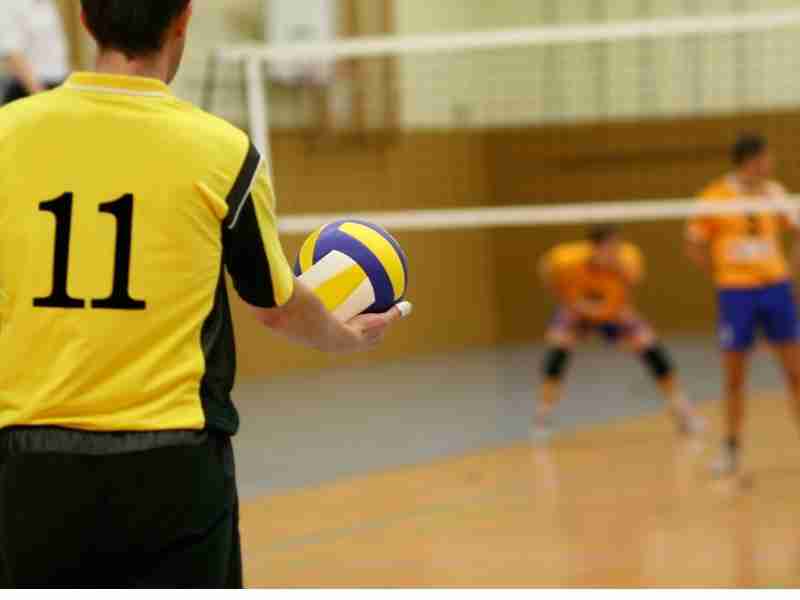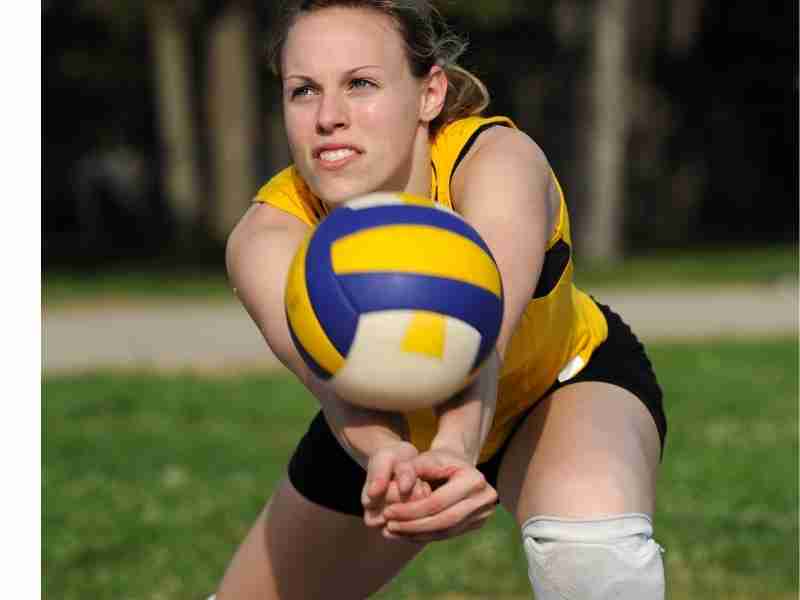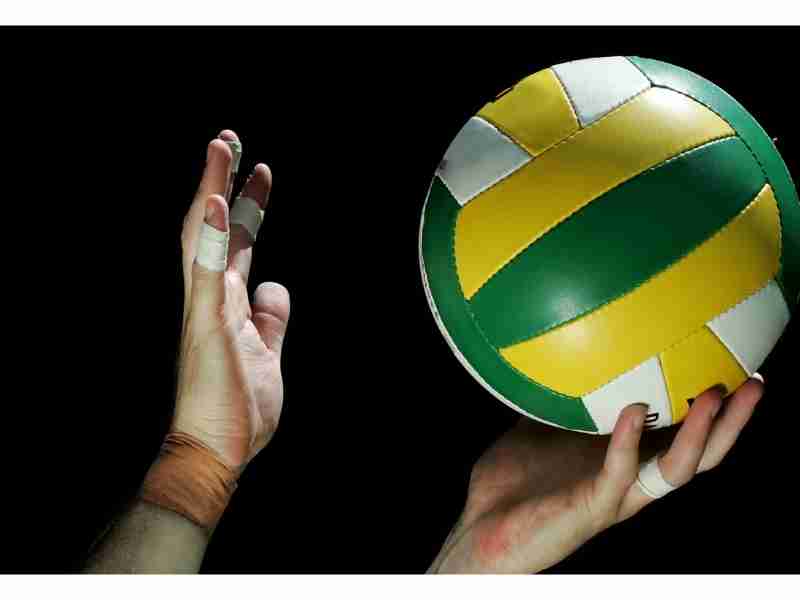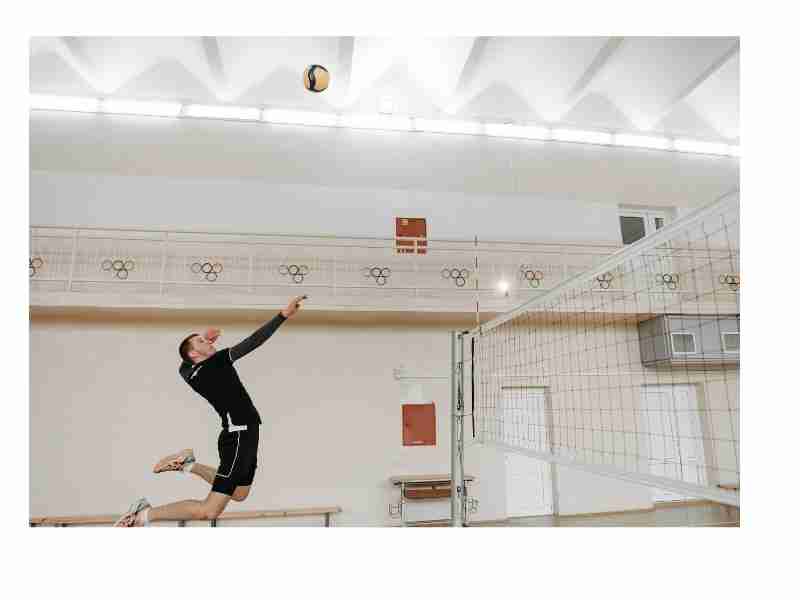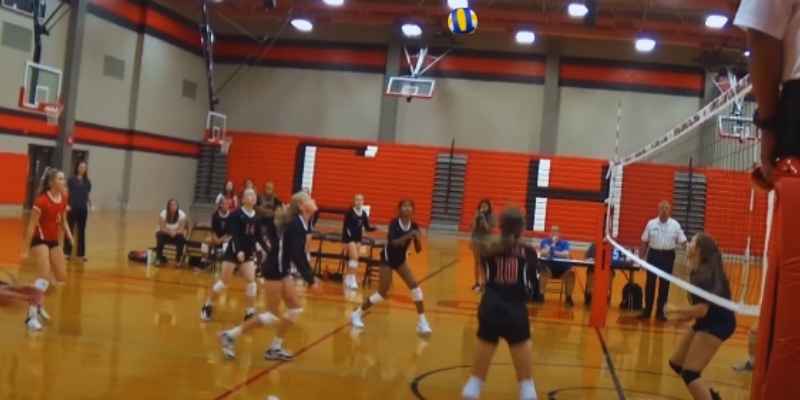
In volleyball, there are many rules that players must abide by to play the game correctly. One of these rules is what is called a double hit.
A double hit is when a player hits the ball twice in a row, whether on purpose or not; it’s called an illegal hit.
Some players might not understand this rule, so in this blog post, we’ll explain a double hit and how it changes the game.
What is a Double Hit in Volleyball?
In volleyball, a double contact (or double hit) is when a player hits the ball twice in a row or when the ball hits different parts of the body in a row.
According to the Federation Internationale de Volleyball (FIVB), double contact with rule 9. 3. 4, a double contact is called when the ball has been hit more than once. This can happen if a player hits the ball twice in succession with different parts of the body or if the ball contacts various parts of the player’s body in succession.
The rule is in place to ensure that players can only hit the ball once during their Attack Hit.
While the rule is in place to keep the game fair, officiating can be challenging. Double contact can sometimes be accidental, and it can be hard to tell if a player meant to hit the ball twice. If a referee believes that a double contact was made intentionally, it is given illegal play.
Double Hit Basic Rules
A double hit is legal in volleyball when receiving a serve, digging a ball, or making the first contact on a serve. The player can create two connections with the ball when receiving a serve if the first is an overhead pass.
When digging, the player can make two contacts with the ball as long as the first is below the waist.
When making the first contact on a serve, the player can make two contacts with the ball if the second is not used to set the ball.
However, a double hit is not allowed on the second contact when setting the ball.
Volleyball referees call a double hit when a player contacts the ball twice in a row. This can happen in a few different ways. The most basic method for a double hit is when a player contacts the ball twice in a row without letting go of the ball between contacts.
This is usually seen with inexperienced players who accidentally hit the ball twice or who think that their teammates are not able to reach the ball. If a player hits the ball twice in succession and the ball hits the net, this is still considered a double hit, and the player will be called for fault.
When a referee is looking for a double hit, they will often watch for the ball to move in a way that isn’t normal. A double hit can also happen when a player tries to dig a ball, but the ball pops back into her after she digs it up. A double hit happens if the player touches the ball again while she is still in control of it.
Double Hit Exceptional Rules
Blocking and blocking attempts do not count as contacts. Because blocking is not considered a hit, a player who blocks an opponent and then tries to hit the ball again to keep it alive or send it back over the net will not be called for double contact.
The double hit rule says you can’t touch the ball twice in a row, but it doesn’t tell you can only touch it once while it’s on your side of the net.
Technical judgment
A double contact fault in volleyball is where players repeatedly touch the ball with two different parts of their bodies. This is generally considered a violation, as it can easily lead to an incorrect play. In terms of setting, if the ball slips through the fingers and touches the head, it is considered a double hit.
Overall, a double contact fault is a violation in volleyball that can often lead to an incorrect play. Players need to be aware of this rule, as it can often be used to their disadvantage.
The Serve and the Double Hit Rule
The serve is one of the most important aspects of volleyball. It is the first opportunity to put the ball into play and can be a potent tool. However, if a player attempts to receive the serve with too much movement, they may be called for a double hit fault. This occurs when the ball hits the player’s arms, torso, face, or upper body. This can be a tough call to make, and it is important to teach younger players the skill of overhead passing, especially on hard-hit serves.
One of the best ways to avoid a double hit fault is to keep the arms close to the body. This will help create a stable platform for the ball to be received.
Additionally, it is important to focus on the ball and not let it hit any other part of the body. If the ball hits the arms and bounces off another part of the body, it will be called a double hit.
The double hit rule is one of the most important rules in volleyball. It is designed to keep players from using too much movement when receiving the ball. By teaching younger players the skill of overhead passing, they can avoid this fault and keep the game moving.
Moreover, overhand passing in volleyball can be challenging to master, but following a few simple guidelines can help you avoid committing a double-hit error.
First, ensure that you are square with the target when you pass and extend your arms through the ball in a pushing motion. Keep your hands firm and don’t let them rise too high; if you do, the ball will likely come into contact with your fingers twice, which is a double hit.
Finally, don’t try to set the ball too high; if it goes above the net, it’s more likely that you’ll end up hitting it twice. If you can follow these tips, you should be able to avoid committing a double-hit error.
The Setter and the Double Hit Rule
In volleyball, the double hit rule can be hard for beginner setters. If you time it wrong, you might touch the ball twice. This can cause the ball to spin, and referees might see this as a double-hit violation.
If you spin sideways quickly, the referee will likely rule it as a violation.
It would be best if you worked with your setter to develop the skill of setting the ball in a clean way. This means that there is no sideways rotation when the ball is set. If you can do this, you will become a better volleyball player.
Overhead Pass And Double Hits
When making an overhead pass in volleyball, there are a few things you need to keep in mind. First, approach the ball in a lower-ready position, leaning forward, so you’re ready to make a smooth, straightforward motion.
You’ll also need to have firm hands so the ball doesn’t bounce off of them. If you’re making an overhead pass, it can be much sloppy and rough.
When it comes to double hits in volleyball, this is when two players on the same team hit the ball consecutively. This is often used to keep the ball in play and make it more difficult for the other team to defend. A double hit can also be used offensively, catching the other team off guard. When executed correctly, a double hit can be a very effective tool.
There are a few things to remember when attempting a double hit. First, both players must be on the same page and know what the other is doing. This can be difficult to do in the heat of the moment, so it’s essential to communicate with each other before the play.
Second, both players need to make contact with the ball simultaneously. This can be tricky, but it’s important to remember that timing is key. If one player hits the ball too early or too late, it can disrupt the play and make it difficult for the other player to make contact.
Double hits can be a great way to keep the ball in play and to surprise the other team. If you and your teammate are on the same page and can execute a double hit with perfect timing, it can be a very effective tool.
What is a “Double Double” in Volleyball?
In volleyball, there are five main statistical categories that everyone tracks. These are Aces, Kills, Blocks, Digs, and Assists. A double-double is when a player achieves double-digit totals in 2 of these five categories in their match.
Bottom Line
So, what is a double hit in volleyball? As you can see, it’s an important rule that can result in either side winning the point. Knowing how and when to use this move can help your team immensely on the court. Read the above and know about it.



